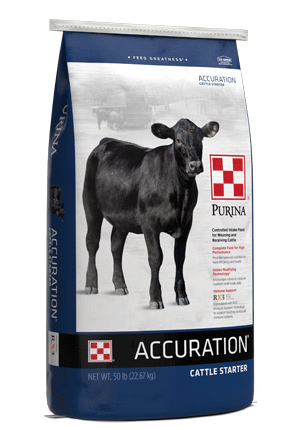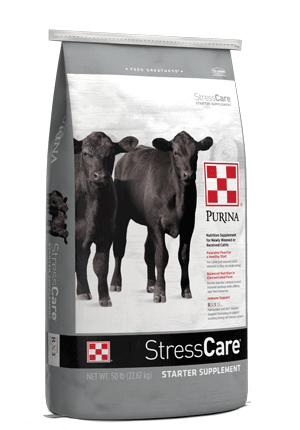
Time: The Key to Transitioning Diets for Cattle
Management : Cow & Calf
Management : Replacement
Nutrition : Minerals
Seasons change. Forage quality improves and declines. Cattle move through different growth stages and reproductive statuses. All these factors can be a trigger for you to transition cattle to a new diet. But remember, feed changes can cause digestive challenges and reduced feed efficiency if not done right.
Time is your ally when transitioning diets. Don’t push it. Because ultimately, what you’re really transitioning are the rumen microbes. Give cattle time to move from one diet to the next so their rumen microbes can adjust to avoid digestive problems like runny manure (see pages 1-3), bloat and acidosis. The more significant the change, such as from a high-roughage to a high-grain diet, the longer the transition should take.
No matter what type of diet you’re transitioning cattle to, including some roughage is necessary to ensure optimal rumen performance. The term “scratch factor” is sometimes used to describe what the high-fiber forages, like dry hay, do in the rumen. Roughage helps keep rumen motility up to reduce acid buildup as the rumen microbes adjust to digesting more energy.
Help keep cattle performing through diet changes with these tips for each stage of life:
In winter or early spring, runny manure from a lack of dry matter intake is something to watch for when grazing lush green forage, such as ryegrass or wheat. This is because there is more moisture in the forage than dry matter. Supplying some dry forage, like hay, when first turned into those pastures will provide additional dry matter and help slow the passage rate down as those rumen microbes adjust to the higher quality forage. This same tactic works well for stocker cattle being introduced to similar types of lush forage.
A calf on pasture still nursing a cow has a developing rumen and can’t break down feed until they’re at least two months of age. As calves mature, they’ll start gradually grazing forage and eating any supplemental nutrition the cow herd receives. Implementing a creep feeding program at 3-4 months of age can help reduce the stress of weaning and prime the rumen for a forage-based diet.
A high-energy creep feed with too much grain may cause rumen upset. Start by introducing a creep feed with highly digestible fiber, like Purina® RangeLand® calf creep, that allows the rumen to transition slowly for approximately 30 days. After calves have acclimated to RangeLand® calf creep, they can be transitioned to the Purina® Accuration® creep feeding program.
Introducing calves to supplemental nutrition in addition to forages requires that the feed be palatable to drive intake, but you don’t want calves to overeat. To maintain rumen health, Purina® Stress Care® 5 Supplement is designed so calves can be hand-fed while still eating forage. Purina® Precon® Complete is another hand-fed option designed to meet the needs of a weaned calf that contains roughage to optimize rumen health. If you want a self-fed starter that doesn’t require additional forage, Purina® Accuration® Starter is a good option. Accuration® Starter is built with Intake Modifying Technology®, allowing calves to snack eat and help reduce digestive challenges.
Does your cattle nutrition program stack up? Find out with a Proof Pays trial.
Time is your ally when transitioning diets. Don’t push it. Because ultimately, what you’re really transitioning are the rumen microbes. Give cattle time to move from one diet to the next so their rumen microbes can adjust to avoid digestive problems like runny manure (see pages 1-3), bloat and acidosis. The more significant the change, such as from a high-roughage to a high-grain diet, the longer the transition should take.
No matter what type of diet you’re transitioning cattle to, including some roughage is necessary to ensure optimal rumen performance. The term “scratch factor” is sometimes used to describe what the high-fiber forages, like dry hay, do in the rumen. Roughage helps keep rumen motility up to reduce acid buildup as the rumen microbes adjust to digesting more energy.
Help keep cattle performing through diet changes with these tips for each stage of life:
Cows
Transitioning diets are often an afterthought with mature cows because they primarily eat forage, so their rumen microbes are accustomed to digesting a high-fiber diet. Times like drought or low forage availability are when you might be forced to suddenly transition from a high-fiber diet to a high-energy diet. Cows can go off feed in this situation, causing a drop in feed efficiency as their rumen adjusts to their new ration. It is necessary to provide adequate time to adjust to the new ration and continually provide roughage to keep their rumen healthy. Giving cows 7 to 10 days to transition from a high-fiber diet to a high-energy diet while slowly increasing the energy consumed throughout that time is the best route.In winter or early spring, runny manure from a lack of dry matter intake is something to watch for when grazing lush green forage, such as ryegrass or wheat. This is because there is more moisture in the forage than dry matter. Supplying some dry forage, like hay, when first turned into those pastures will provide additional dry matter and help slow the passage rate down as those rumen microbes adjust to the higher quality forage. This same tactic works well for stocker cattle being introduced to similar types of lush forage.
Calves on cows
The transition from a milk-based diet to a forage-based diet is an important one to get right. A smooth transition will set the calf’s gut microbiome up right from the beginning to help improve feed efficiency throughout their life.A calf on pasture still nursing a cow has a developing rumen and can’t break down feed until they’re at least two months of age. As calves mature, they’ll start gradually grazing forage and eating any supplemental nutrition the cow herd receives. Implementing a creep feeding program at 3-4 months of age can help reduce the stress of weaning and prime the rumen for a forage-based diet.
A high-energy creep feed with too much grain may cause rumen upset. Start by introducing a creep feed with highly digestible fiber, like Purina® RangeLand® calf creep, that allows the rumen to transition slowly for approximately 30 days. After calves have acclimated to RangeLand® calf creep, they can be transitioned to the Purina® Accuration® creep feeding program.
Weaned calves
Weaning can be a very stressful event for calves as they are removed from their mothers and new feeds are introduced. Weaning feeds should be palatable so calves want to consume them, but importantly, formulated with the proper levels of protein, energy, fiber ingredients, vitamins and minerals to support gut health and help with immunity and overall performance.Introducing calves to supplemental nutrition in addition to forages requires that the feed be palatable to drive intake, but you don’t want calves to overeat. To maintain rumen health, Purina® Stress Care® 5 Supplement is designed so calves can be hand-fed while still eating forage. Purina® Precon® Complete is another hand-fed option designed to meet the needs of a weaned calf that contains roughage to optimize rumen health. If you want a self-fed starter that doesn’t require additional forage, Purina® Accuration® Starter is a good option. Accuration® Starter is built with Intake Modifying Technology®, allowing calves to snack eat and help reduce digestive challenges.
Feeder cattle
Moving from one diet to another is common in feedlots, where cattle move from a starter ration to a growing ration to a finishing ration. As the cattle are transitioning to the finisher diet, you are providing less forage and higher levels of energy from grain. During this transition, you are changing the rumen microbe population, and that takes time.It takes 21 to 28 days for newly arrived cattle to transition to the higher energy ration and for the rumen microbes to adjust. A step-up from one ration to the next can happen typically in three steps with week-long periods between when the percentage of forage decreases and the percentage of grain increases.1 By slowly ramping up the amount of energy, you’re ensuring digestive issues will be limited, and performance can be optimized.
Final thoughts
As you move cattle from high-fiber/low-energy diets to low-fiber/high-energy diets, the rumen microbes digesting those feeds must change, and that change does not occur in a day or two. Time is your ally. Taking your time to move cattle onto a new ration helps maintain the stability of their rumen microbes, which impacts overall performance. No matter what, you should provide a complete mineral to your cattle, regardless of their life stage. A mineral balanced for vitamins and trace minerals will help safeguard the rumen microbes to assist in the adjustment from one diet to the next.Does your cattle nutrition program stack up? Find out with a Proof Pays trial.
1 Felix TL. Transitioning calves: From pasture to feedlot. Penn State Extension. March 2023.



